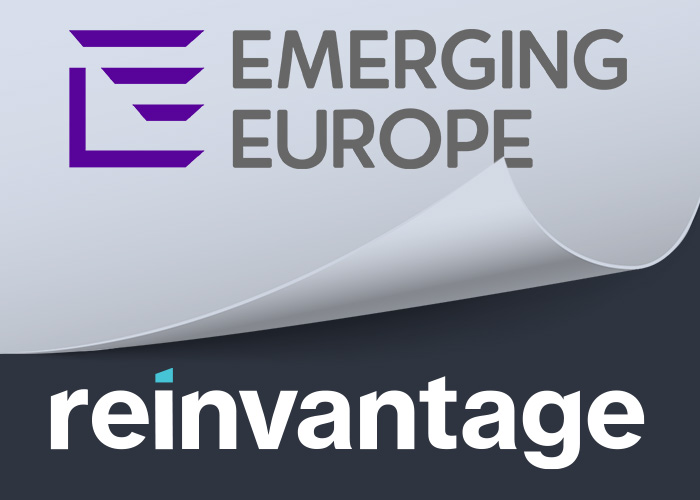We often think of resilience as the ability to recover from shocks and return to the previous state of being. However, we know from nature that real resilience comes from the ability to adapt and evolve.
Not all digital networks, and not all nodes within them, are equal. Some networks are easier to scale, harder to compete with and thus more valuable than others, while some nodes are more connected and more influential than others.
Advertisers rewarding influencers on YouTube, TikTok and other social networks are simply recognising this simple fact. The more connected a node (platform or person) is the more powerful the influence they have within the network.
Experiments have confirmed that using digital networks we are now, on average, only six degrees of separation from anybody on Earth.
However, the growth of digital networks has monetised this insight. For platforms like LinkedIn it is self-evident that the more connected the networks constructed between individuals become, the more valuable that the network becomes for all. However, not all networks are equally scalable.
Recent research by Feng Zhu and Marco Iansati at the Harvard Business School has shown that scale-free globally integrated networks are both more able to leverage network effects and harder to compete against because it’s far more difficult for competitors to enter a market on a global scale.
In smaller, local networks, incumbents, with established brands and customer relationships, find it easier to resist disruption. Equally, many are becoming adept at creating digital platforms of their own which leverage recognition from their existing brands.
Think how taxi companies have developed software applications to resist the likes of Uber and Estonia’s Bolt. Furthermore, competitors require smaller amounts of capital to compete in local networks than they do in scale-free global networks.
Customer relations also differ significantly between local and global networks. Within local networks customer relationships with suppliers are often likely to be repeated if they are positive experiences.
If you employ a builder or a plumber to do some work in your house you are likely to both use them again and recommend them to your friends. Thus once a builder or plumber has enough clients to fill their working schedule they will have no further need for the hub.
Thus, there are incentives for both customers and suppliers to avoid transaction fees and to bypass the hub. Yet, it is precisely those suppliers that have used the hub to fill their schedule that attract the highest ratings on the hub.
Relationships of dependence
The relationships of dependence that the likes of Amazon have successfully created do not apply as easily to local networks. The more that a business model can aggregate trust and connectivity into a centrally controlled hub, and by implication create local dependence upon it, the more successful the business model is likely to be.
As such, Zhu and Iansati are able to argue that, because Uber is really a collection of locally specific networks, when compared to the global network of AirBnB, the value of each ought to be constructed differently.
The scale-free nature of AirBnBs network, they argue, is more valuable than the local networks of Uber, which, as described above, are more vulnerable to value erosion.
Digital hub firms are not just dominating individual markets however. Increasingly they are bridging from their monopolistic network in one marketplace to disrupt and dominate another.
They take their existing network from one market and then use them to enter another industry and disrupt its competitive structure—transforming it from product-driven to network-driven. As Iansati and Karim Lakhan put it, they plug adjacent industries into the same competitive bottlenecks they already control.
Technology firms are using their ability to capture data about their customers to bridge their core competencies towards markets and products where there exists customer overlap.
Amazon’s growth from an online bookshop to the leading global marketplace for almost anything is a case in point. It has combined technological and social groove-in to expand network effects to the point where they have become omnipresent.
The extent to which network economics has already transformed the wider global economy led Iansiti and Lakhani to argue that, “the global economy is coalescing around a few digital superpowers.”
The risk of sudden failure
Even before Iansati and Lakhani’s article appeared, Paul Mason, in his book Postcapitalism, claimed that the marginal cost of distributing and, in some cases, even producing, products and services in the digital economy was closing in on zero.
For example, think how much it costs Apple to send you a song from their iTunes platform. It is true that Apple carries significant fixed costs to sustain the iTunes platform, but the marginal costs of distributing each individual song download is negligible.
Both the problem and the opportunity with deeply interconnected networks is that people do not “recognise the speed with which non-linear, cascading network effects” affect outcomes, according to Yasmin Merali at the University of Hull.
It is the combination of complexity and tight coupling that creates the greatest risk of sudden systemic failure. What digital technology does is bring them together. In good times this creates seemingly boundless opportunity, but when it fails it can be catastrophic.
The way to increase resilience is to deliberately build slack or redundancy into systems. However, we have so completely come to think of management as a search for efficiency, optimisation and productivity that it requires a significant shift of mindset for most executives.
The power of reinvention
We often think of resilience as the ability to recover from shocks and return to the previous state of being. However, we know from nature that real resilience comes from the ability to adapt and evolve.
For this to happen in businesses there has to be enough slack in the system for executives to be able to modify the system and not just be responsive to it. In case anyone doubts the wisdom of this just examine the supply chain crises following the recent pandemic, which still continue for some companies.
Technology is offering a fools gold imagined world of hyper efficiency, when to flourish we need to recognise that survival in the network economy is about adaptation first and optimisation second.
At Emerging Europe, we use an integrated approach centred around market intelligence to help organisations understand trends and strategically position themselves for success.
Learn how our solutions can help you thrive in the region:
Company and Services Overview | Strategic Advantage.


Add Comment